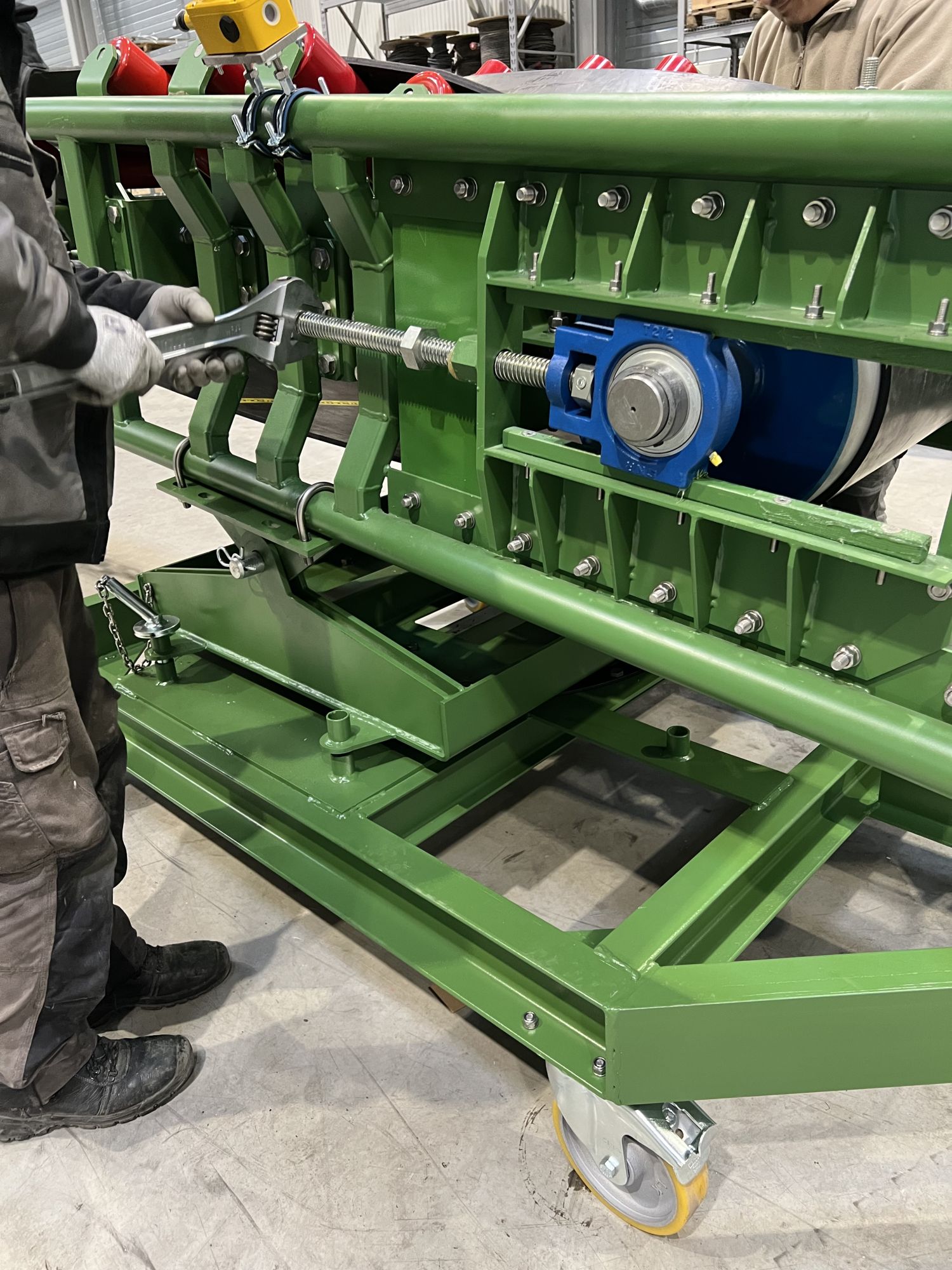


Maintenance & safety
Before starting up the conveyor, the user must check the Belt tension. To do this, it is essential to follow the various steps. A test run may be necessary when starting up the installation, after taking care to install all protective devices and remove all foreign objects such as tools, stones, ballast, etc.
Before any intervention on the Belt Conveyor, it is necessary to stop the installation after having familiarized yourself with the procedure for intervention in hazardous areas and components. Tension adjustment must be carried out when slippage on the drive drum is detected, unless the rubber lining of the drive drum is worn or defective.
To change the Belt tension, loosen the locknuts on the tensioning rods of the foot drum tensioning blocks.
It's a question of parallelism between the two axes of the Belt. If the left-hand strand is less taut than the right-hand one, this will result in drift, on one side or the other.
Tensioning operations can be repeated if necessary.

The definition of the Belt to be used depends directly on the products to be handled and the throughput rate of the installation. There are many different types of Belt:
Among this diversity of materials, it is possible to refine your choice with a special treatment:
To select the right reducer, first calculate the flow rate. You need to determine the length of the Belt Conveyor, its inclination, the width of the belt, and the desired throughput.
Based on these elements, a minimum motorization power is calculated, and the gearbox is defined according to the rotation speed of the drive drum.